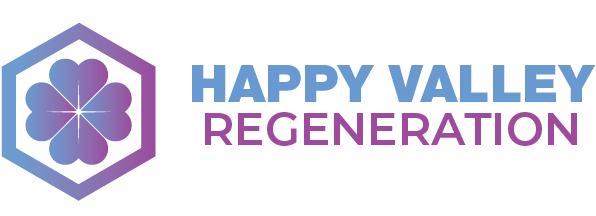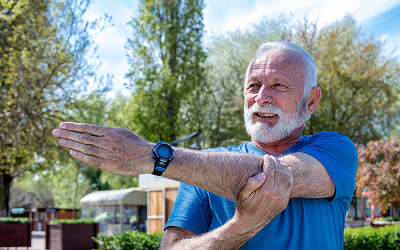Introduction: Finding True Healing for a Debilitating Problem
Chronic back pain is a global health crisis that affects sleep, mobility, and independence. For years, patients have faced two primary options: relying on pain medications and temporary injections or opting for major spinal surgery.
Methods often fail because they either mask the pain or involve significant alterations, without addressing the root cause—damaged tissue that needs to heal.
Today, a new treatment paradigm is emerging: Regenerative Medicine for Back Pain. This innovative approach uses advanced biological treatments to stimulate the body’s natural ability to heal itself.
Instead of just masking symptoms or performing invasive surgery, the focus is on rebuilding the damaged tissues at the cellular level. This guide will explore these therapies, the science behind structural repair, and how Regenerative Medicine for Back Pain offers lasting relief to patients.
What is Regenerative Medicine and Why Does the Spine Need It?
Regenerative medicine focuses on replacing, engineering, or stimulating the regeneration of human cells, tissues, and organs to restore normal function.
In chronic spinal issues, this means delivering concentrated healing factors directly to the structures—such as discs, ligaments, and facet joints—that struggle to heal due to limited blood supply.
The spine is particularly vulnerable to degeneration because key structures, especially intervertebral discs, lack blood vessels.
Once damaged by stress, injury, or age, these structures can’t access the repair components they need. Regenerative Medicine for Back Pain addresses this by introducing those vital components directly, initiating a localized healing process that the body struggles to start on its own.
How Regenerative Medicine for Back Pain Works
Regenerative treatments for the spine achieve effectiveness through targeted biological signaling. These therapies transform the environment around the damaged tissue from one of chronic deterioration to one of active repair.
The key mechanisms driving success include:
- Controlling Chronic Inflammation: These therapies introduce powerful anti-inflammatory signals that calm the hostile environment surrounding the damaged nerve roots and tissues. This helps reduce pain and allows healing to begin.
- Neuroprotection: The biological components release factors that protect existing nerve cells from further degeneration, promoting relief and improved sensation.
- Stimulating Native Restoration: Growth factors are delivered to “activate” local repair cells, such as fibroblasts in ligaments and chondrocytes in joints, helping them produce new, healthy collagen and cartilage.
This biological intervention plays a crucial role in achieving sustained success in Regenerative Medicine for Back Pain. The core therapies include:
Advanced Stem Cell Therapy
Advanced Stem Cell Therapy is at the heart of regenerative spinal care. It involves injecting concentrated Mesenchymal Stem Cells (MSCs), often from the patient’s own tissue or high-quality donor sources. MSCs are master repair cells that modulate immune responses and deliver thousands of growth factors.
- Disc Regeneration: MSCs injected into a damaged disc encourage native disc cells to regenerate the structural matrix, potentially restoring hydration and height.
- Joint Repair: When injected into facet or sacroiliac joints, MSCs reduce inflammation and help rebuild worn-down cartilage and bone.
This stem cell treatment promotes tissue repair, allowing patients to avoid invasive surgery while achieving long-term relief.
Platelet-Rich Plasma (PRP) Therapy
PRP harnesses the healing power of the patient’s own blood. A small blood sample is processed to isolate a plasma solution rich in platelets, which release growth factors and proteins when activated.
- Action: In the spine, PRP acts as a biological jumpstart, signaling local cells to initiate repair, accelerate wound healing, and reduce inflammation.
- Application: PRP is effective for treating chronic pain in soft tissues, such as ligament laxity, myofascial pain, and tendon injuries around the spine and pelvis.
Prolotherapy
Prolotherapy involves injecting a mild irritant solution (often dextrose) into lax ligaments or tendons. This controlled inflammatory response triggers the body’s natural repair mechanisms.
- Action: The inflammation prompts the body’s proliferative cascade, leading to tighter, stronger ligaments that stabilize the spine.
- Application: Prolotherapy is especially useful for treating chronic joint instability, particularly in the sacroiliac joint, where ligament laxity often causes severe pain.
Benefits of Regenerative Medicine for Back Pain
Choosing a regenerative approach offers durable, structural healing, overcoming the limitations of traditional treatments.
- Achieving Lasting Relief and Structural Integrity: Regenerative Medicine heals tissues directly, providing relief without masking the problem. This reduces pain and can significantly decrease reliance on medications.
- Minimally Invasive, Outpatient Care: The therapies are delivered via image-guided injections (fluoroscopy or ultrasound) in an outpatient setting. This avoids large incisions and general anesthesia, reducing recovery time and risk.
- Safety and Integrative Care: These treatments, often using the body’s own cells or rigorously sourced allogeneic products, offer a high safety profile. Integrating various modalities—including Naturopathic, Chinese, and Conventional Medicine—maximizes the healing process.
Avoiding Major Spinal Surgery
One of the greatest benefits of regenerative medicine is its ability to help patients avoid major spinal surgery. Many individuals with chronic disc pain or joint arthritis have found relief through regenerative therapies, allowing them to avoid procedures like spinal fusion. These patients report improved mobility, reduced pain, and better sleep.
Success Stories and The Research Foundation
The growing body of research and patient success stories shows the effectiveness of regenerative therapies. Studies have shown that these treatments can improve the water content and integrity of discs, leading to pain reduction.
Clinical data supports the use of PRP and Prolotherapy for pain relief and stabilization in conditions like sacroiliac and facet joint arthritis.
Who is a Good Candidate for Regenerative Medicine for Back Pain?
Regenerative Medicine for Back Pain is ideal for individuals with chronic conditions caused by tissue damage, including:
- Degenerative Disc Disease (DDD): Pain caused by internal disc degradation or annular tears.
- Facet Joint Arthropathy: Pain from arthritis and inflammation in the facet joints.
- Ligament and Soft Tissue Injury: Instability and pain from chronically strained ligaments in the lumbar spine and pelvis.
- Surgical Candidates Seeking Alternatives: Patients seeking non-invasive solutions before opting for spinal fusion or other major surgeries.
A proper diagnosis, confirmed by imaging and physical evaluation, ensures the patient’s condition is responsive to regenerative treatments.
What to Expect from the Treatment Process
Pursuing Regenerative Medicine for Back Pain is a personalized, comfortable experience.
- Personalized In-Home Consultation: The journey begins with a consultation, often conducted in your own home. The specialist will review your medical history, imaging, and treatment options.
- Precision Treatment: After creating a customized plan, the treatment is delivered through precise, minimally invasive injections, guided by advanced imaging techniques.
- Recovery and Aftercare: Recovery is quicker than surgery, but aftercare is essential. Adhering to instructions and avoiding NSAIDs will allow the healing process to begin.
Risks and Expert Considerations
Regenerative therapies are safe, with minimal risks, generally limited to temporary swelling or bruising. Proper oversight by a skilled practitioner is crucial for success. Success depends on accurate diagnosis, high-quality regenerative products, and patient commitment.
Conclusion: The Future is in Biological Repair
Regenerative Medicine for Back Pain offers a biologically-focused alternative to traditional treatments. It heals tissues at their source, providing lasting relief, restored mobility, and avoiding surgery.
Call to Action: Start Your Healing Journey
Don’t let chronic pain limit your life. Learn more about Regenerative Medicine for Back Pain and how it can restore your comfort. Schedule a personalized consultation today and take the first step toward healing.




